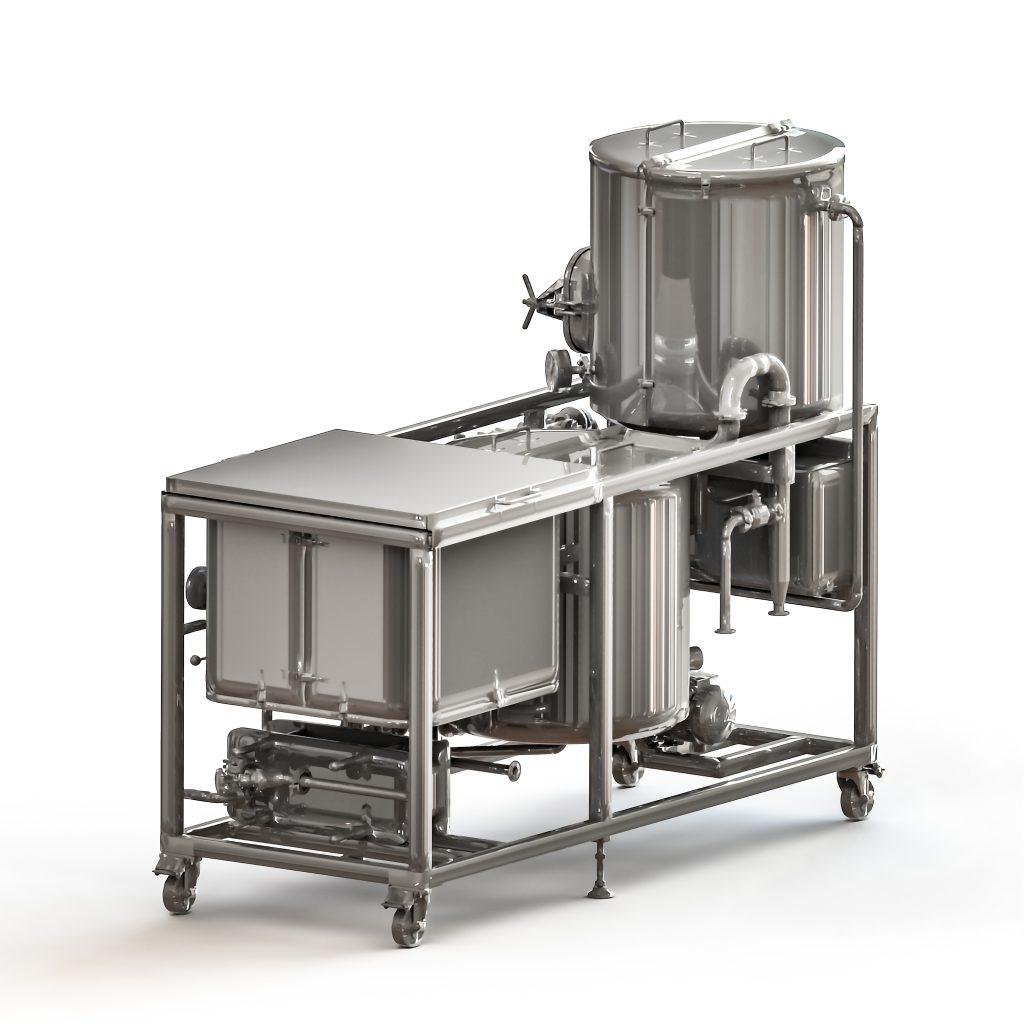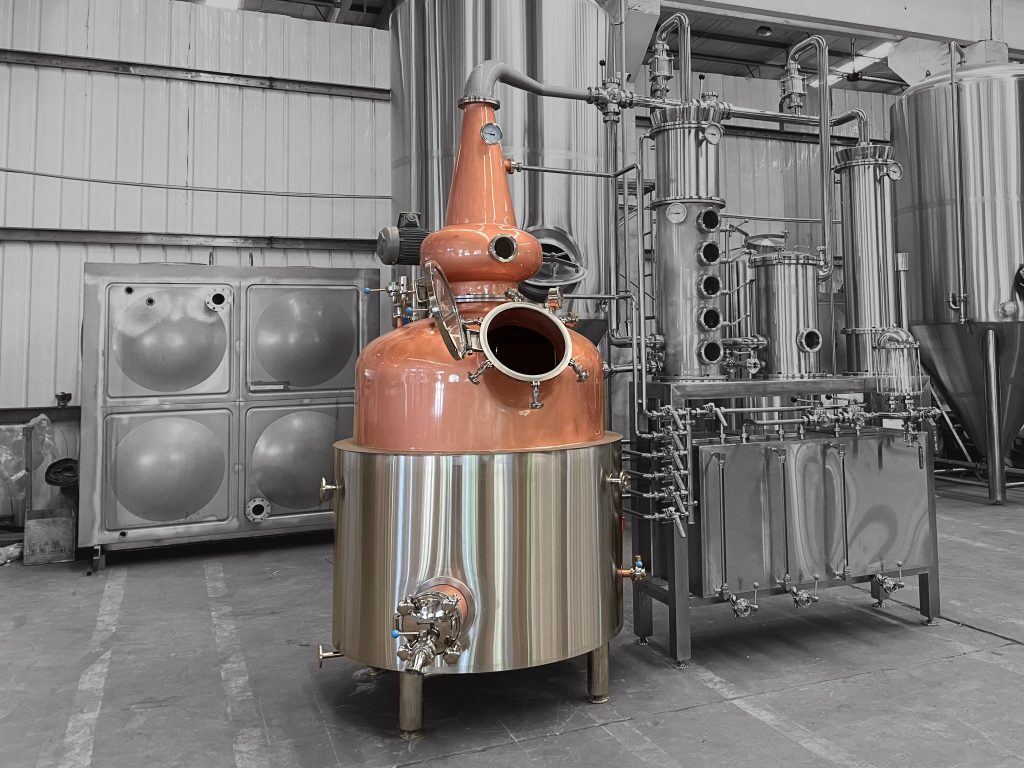Introduction

The craft beer revolution has swept the globe, with enthusiasts seeking out unique and flavorful brews. At the heart of this movement lies the crucial role of craft brewery equipment. This equipment empowers brewers to experiment with ingredients, techniques, and styles, leading to the creation of exceptional beers that tantalize the taste buds. In this blog, we’ll delve into the world of craft brewery equipment, exploring its diverse components and how they contribute to the art of brewing. Understanding the nuances of craft brewery equipment is paramount for any aspiring or established brewer aiming to produce distinctive and high-quality craft beer. This equipment enables precise control over every stage of the brewing process, from milling and mashing to fermentation and packaging.
The Foundation: Milling and Mashing Equipment
The journey of craft beer begins with the milling and mashing processes. High-quality craft brewery equipment for milling ensures that grains are crushed to the optimal size, allowing for efficient extraction of sugars during mashing. The mash tun, a critical component of the craft brewery equipment, facilitates the conversion of starches into fermentable sugars. The design and functionality of the mash tun significantly impact the beer’s flavor profile and overall quality. Different types of mash tuns, such as single infusion, multi-temperature, or decoction, cater to various brewing styles and preferences. The precision offered by modern craft brewery equipment in these initial stages lays the groundwork for the unique flavors that characterize craft beer.
The Heart of Brewing: The Brew Kettle
The brew kettle is where the magic happens. This critical piece of craft brewery equipment is where the wort is boiled, and hops are added to impart bitterness, flavor, and aroma. The size and design of the brew kettle, along with the heating system, influence the consistency and quality of the final product. Advanced craft brewery equipment includes features like precise temperature control and efficient heating elements, ensuring optimal extraction and utilization of hops. The brew kettle’s role in the brewing process cannot be overstated; it is where the beer’s character is shaped, and its unique flavor profile begins to emerge.
Fermentation: Where the Magic Transforms
Fermentation is the transformative stage where yeast converts sugars into alcohol and carbon dioxide. Fermentation vessels, a vital part of the craft brewery equipment, come in various shapes and sizes, each influencing the beer’s characteristics. Cylindroconical fermenters, for example, allow for easy yeast harvesting and clarification, contributing to cleaner and more consistent flavors. Temperature control during fermentation is crucial, and modern craft brewery equipment offers precise temperature regulation, ensuring optimal yeast activity and preventing off-flavors. The fermentation process is where the raw ingredients are transformed into the final product, and the quality of the craft brewery equipment used in this stage is paramount.
Conditioning and Clarification: Refining the Brew
After fermentation, the beer undergoes conditioning and clarification to enhance its flavor and appearance. Conditioning tanks, also known as bright tanks, allow the beer to mature and develop its full flavor profile. Clarification processes, such as filtration or centrifugation, remove unwanted particles and improve the beer’s clarity. Craft brewery equipment for conditioning and clarification plays a vital role in refining the beer’s quality and ensuring a polished final product. The level of control offered by these pieces of craft brewery equipment directly influences the beer’s overall quality and consistency.
Packaging: Preserving the Craft
Packaging is the final stage in the brewing process, where the beer is prepared for distribution and consumption. Bottling, canning, and kegging equipment are essential components of the craft brewery equipment lineup. The quality of packaging equipment impacts the beer’s shelf life and presentation. Modern craft brewery equipment ensures efficient and consistent packaging, maintaining the beer’s quality and preserving its unique flavors. The correct packaging ensures customers get the best possible version of your product.
Essential Craft Brewery Equipment Table
| Equipment Type | Function | Impact on Flavor |
|---|---|---|
| Mill | Crushes grains to optimal size | Affects sugar extraction and mash efficiency |
| Mash Tun | Converts starches into fermentable sugars | Influences sugar profile and beer’s body |
| Brew Kettle | Boils wort and adds hops | Determines bitterness, flavor, and aroma |
| Fermenter | Converts sugars into alcohol and CO2 | Shapes flavor profile and alcohol content |
| Conditioning Tank | Allows beer to mature and develop flavor | Enhances smoothness and complexity |
| Filtration/Centrifuge | Removes unwanted particles | Improves clarity and appearance |
| Bottling/Canning/Kegging Equipment | Packages beer for distribution | Preserves freshness and flavor |
| Glycol Chiller System | Controls fermenation temperatures. | Allows for stable and consistant fermentation. |
| Cleaning in Place (CIP) System | Automated cleaning of brewery equipment. | Ensures sanitary conditions, prevents off flavors. |
The Importance of Quality Craft Brewery Equipment
Investing in high-quality craft brewery equipment is essential for producing exceptional craft beer. Quality equipment ensures consistency, efficiency, and precision throughout the brewing process. It allows brewers to experiment with different ingredients and techniques, leading to the creation of unique and innovative beers. High-quality craft brewery equipment also contributes to the longevity and reliability of the brewery, reducing maintenance costs and downtime. The correct equipment will increase the quality of your product.
Maintaining and Cleaning Craft Brewery Equipment

Proper maintenance and cleaning are crucial for ensuring the longevity and performance of craft brewery equipment. Regular cleaning prevents the buildup of bacteria and other contaminants, which can negatively impact the beer’s flavor and quality. Cleaning-in-place (CIP) systems automate the cleaning process, ensuring thorough and efficient sanitation. Routine maintenance, such as inspecting and replacing worn parts, helps prevent equipment failures and downtime. A clean brewery is a brewery that produces a superior product.
Conclusion
Craft brewery equipment is the cornerstone of the craft beer revolution. It empowers brewers to create unique and flavorful beers that captivate the senses. By understanding the diverse components of this equipment and their impact on the brewing process, brewers can elevate their craft and produce exceptional beers. Investing in high-quality craft brewery equipment and maintaining it properly are essential for any brewery aiming to produce consistently high-quality craft beer. To begin your journey in creating unique flavors, contact us today, and we will help you to find the right craft brewery equipment for your needs.
FAQ
What are the essential pieces of craft brewery equipment?
Essential equipment includes a mill, mash tun, brew kettle, fermenters, conditioning tanks, and packaging equipment.
How does craft brewery equipment impact beer flavor?
Each piece of equipment plays a role in shaping the beer’s flavor, from sugar extraction and hop utilization to fermentation and conditioning.
Why is quality craft brewery equipment important?
Quality equipment ensures consistency, efficiency, and precision, leading to higher-quality beer.
What are CIP systems?
CIP systems are “Clean in Place” systems. They automate the cleaning process, ensuring thorough and efficient sanitation of brewery equipment.

